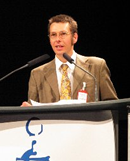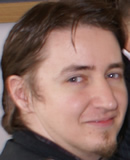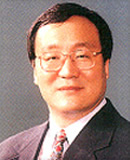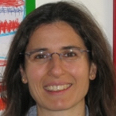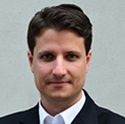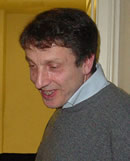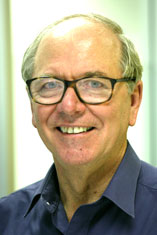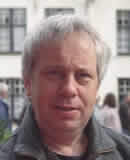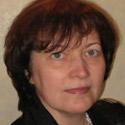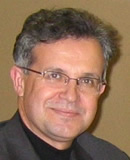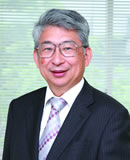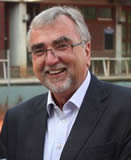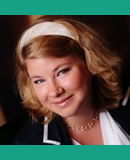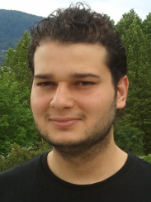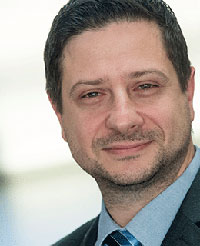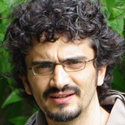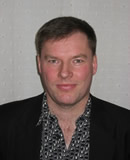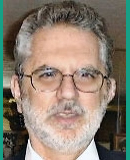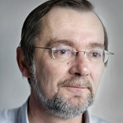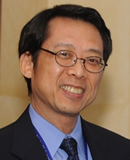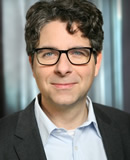Abstracts
Have a look at the lecture abstracts of this year's edition and explore the profiles of the presenters!
All times are UTC+2 (Vienna, CEST - Central European Summertime).
This contribution to NEMO 2016 is not oriented on innovations or research works concerning the theory and implementation of enterprise modelling tools and methodology. Complementary, it is focusing on an application area, which induces specific requirements and needs for such methodologies. Industrial Product Service Systems (PSS) are a recent industrial concept offering strong opportunities both for business innovation and sustainability improvement. Coupling or even integrating industrial production and service delivering poses many innovative challenges for the manufacturing industry at the technological, organizational and even human level. In the recent years, many international projects have contributed to important scientific advances in the field. The lecture will first give a synthetic insight on PSS, to make possible for the audience to understand the key concepts of PSS and key industrial needs to manage an economical transition towards this new form of industrial economy. Then, the lecture will underline specific research orientations directly linked to the needs of developing enterprise modelling and engineering solutions, to support the configuration, deployment, and life cycle management of PSS and value creation chains. The practical part of the lecture will offer the audience the opportunity to experiment a customized modelling tool implemented using the ADOxx platform, named ‘PSS Scenarios Modeler’. PSS Scenarios Modeler is designed to support PSS engineering through a progressive capitalization of the designers’ ideas and knowledge throughout the engineering process. The audience will go through a stepwise modelling process to define PSS organizational scenario in a specific context.
Lecture at NEMO2016
Date/Time: Monday, July 25, 2016 at 14:00 UTC+2/CEST
A key driver of the Linked Data paradigm is the ability to lift data graphs from legacy systems, by employing various adapters and RDFizers (e.g., D2RQ for relational databases, XLWrap for spreadsheets). Such approaches aim towards removing boundaries of enterprise data silos by having them open to cross-organisational linking within a “Web of Data”. An insufficiently tapped source of machine-readable semantics is the underlying graph nature of diagrammatic conceptual models - a kind of information that is richer compared to what is typically lifted from table schemata, especially when a domain-specific modelling language is employed. The lecture advocates an approach to Linked Data enrichment based on a diagrammatic model RDFizer originally developed in the context of the ComVantage FP7 research project. The presentation will provide a minimal but illustrative example from which arguments will be generalized beyond the originating project context, leading towards a proposed vision of “conceptual model”-aware information systems.
Lecture at NEMO2016
Date/Time: Wednesday, July 27, 2016 at 09:00 UTC+2/CEST
In the age of Internet of Things, business models often require high reliable requirements and specifications. In this talk, we define three important properties of software which are “reliability”, “safety” and “security”. We then introduce several formal methods in terms of formal specification and formal verification. We show briefly that how we can use formal methods to build models with high reliable/safe/secure properties.
Lecture at NEMO2016
Date/Time: Wednesday, July 20, 2016 at 10:00 UTC+2/CEST
Big Data technologies have rapidly achieved widespread adoption for many reasons, e.g., thanks to the versatility with which they foster innovative products by direct analysis of various user contents (e.g., tweets, blogposts, likes, pictures, etc.). However, designing and developing Big Data applications is still a considerable problem since: (a) it involves many side-costs the time spent on learning about and designing with the many big data frameworks; (b) it requires to balance out infrastructural and corporate governance costs with (non-trivial) development and deployment costs; (c) it most likely requires additional costs for the various trial-and-error experiments needed to match desired performance. We argue that a relevant part of said costs can be saved by tackling the design, development and deployment of Data Intensive Applications (DIAs) with Model-Driven Engineering (MDE) framed into a DevOps process. The purpose of this course/presentation is to show how MDE and DevOps have been applied to the design of Data Intensive Applications and to identify new research areas and issues.
Lecture at NEMO2016
Date/Time: Thursday, July 28, 2016 at 11:30 UTC+2/CEST
In this lecture it will be shown how concepts of meta modelling can be applied in two core areas of modern information systems. For this purpose the lecture will start with a brief introduction into the theoretical foundations of meta modelling and the corresponding realization of modelling methods on the ADOxx meta modelling platform. Subsequently, the application areas of business process management and ontologies will be introduced. Thereby it will be particularly focused on the challenges and opportunities of adapting existing modelling concepts in these areas to the personal needs of users, organizations, as well as technical processing functionalities in the form of algorithms. As a solution to these challenges the introduced meta modelling concepts will be applied. Furthermore, it will be discussed how this approach permits to design and implement innovative software applications that bring together the technical opportunities of semantic technologies and established business process management methodologies. The concepts and applications will be illustrated using case studies from research and industry projects. In particular it will be reverted to concepts and implementations from the SeMFIS research project conducted at Stanford University that is hosted at www.omilab.org.
Lecture at NEMO2016
Date/Time: Thursday, July 21, 2016 at 14:00 UTC+2/CEST
In recent years, the development of domain-specific modelling languages (DSML) has gained remarkable attention. This is for good reasons: A DSML incorporates concepts that represent domain-level knowledge. Hence, systems analysts are not forced to reconstruct these concepts from scratch. At the same time, DSML contribute to model integrity, because they include already constraints that would otherwise to be added manually. Even though there has been a considerable amount of research on developing and using domain-specific modelling languages, there is still lack of comprehensive methods to guide the design of these languages. In this course the participants will learn to use a method for designing DSML. It includes heuristics to analyse requirements and meta-modelling guidelines that support frequent design decisions. The use of the method will be illustrated by the development of an example DSML.
Lecture at NEMO2016
Date/Time: Monday, July 25, 2016 at 11:30 UTC+2/CEST
Software is constantly evolving; this evolution is motivated by different reasons such as the obsolescence of a technology, the pressure of users, or the need to build a single coherent information system when merging companies. My research lies in the field of software modernization, a kind of evolution that refers to understand and evolve existing software assets to maintain a large part of their business value. In my talk, I present a Model-Driven Engineering approach to leverage modernization. The approach consists of two phases: i) Knowledge discovery of the existing system, ii) Transformative steps that move the as-is state to the to-be state. The first phase involves reverse engineering the existing software and presenting several different views to the users. The views help users to understand the legacy in an agnostic way and to take decisions that guide the transformative steps. I present results of the approach application into two projects that involves Colombian academic and industrial partners. This work has helped us to gain experience on Model-Driven visualizations that can be transferred to the Internet Of Things field where there are data understanding challenges. One can think about Model-Driven tools that produce metric-centered visualizations that helps one to discover aspects on the data emitted by devices. The reasons to use modeling in this field are: the power of models to unify inputs from different origins (i.e., devices) and the facility of building graphical editors on top of models. The talk ends with a practical work where participants will build a graphical editor based on a model.
Lecture at NEMO2016
Date/Time: Tuesday, July 26, 2016 at 11:30 UTC+2/CEST
Business Process Modelling (BPM) and Business Intelligence (BI) are two important areas in business informatics, which are treated, often rather separated from each other. Looking at the literature and the activities in the two areas shows that process modelling takes a look at the business from a more production and organizational oriented view, whereas business intelligence activities emphasize more the role of the customer in the business process. In this lecture we want to take a unified view onto these two approaches and show how BPM and BI support each other. For demonstration we use the activities of data understanding and data provisioning which are at the beginning of any BI activity. Due to the abundance of data on the Internet integration of traditional data sources and big data is a challenging task. We present a process model for data integration and show how this model can be realized using the ADOxx platform. The basic idea of the model is simultaneous processing of the data workflow and the associated workflow of the metadata which describe the data processing activities. Such a model supports better understanding of the data and extends traditional methods for accessing data quality.
Lecture at NEMO2016
Date/Time: Tuesday, July 26, 2016 at 09:00 UTC+2/CEST
We define Japanese creative services and discuss how they have been sustained successfully and its application to global service enhancement. There are many ``Shinise’’ (shops of long standing) service companies in Japan that are quite unique compared to the companies located in any other geographical region. They typically have anecdotal values based on nature and seasons, various types of culture, histories, and/or lifestyles. Several Japanese creative services are expanding their activities toward global markets. We explain the mechanisms of the sustainability and scalability of advanced cases of Japanese Creative Services. A key aspect of the mechanism is a communication between service providers and consumers based on sharing/interpreting/utilizing of tacit context in a community. For analyzing the key aspect, we propose the combined approach of sociology/anthropology, psychology, engineering and design thinking. We developed a meta-modeling platform for handling the combined analysis of the Japanese Creative Services. We believe that this kind of approach will contribute to creating new values within the field of service science and for value-added global services.
Lecture at NEMO2016
Date/Time: Monday, July 25, 2016 at 10:00 UTC+2/CEST
Design thinking is increasingly used to design systems in complex environments. Briefly, design thinking is a social process where stakeholders work in interdisciplinary teams to create innovative solutions. The focus here is on brainstorming rather than analytical design. Visualizations are almost natural here as stakeholders look at visual representations of solutions, identify issues and discuss alternatives. The important aspect of design thinking is that it leads to creativity outcomes followed by innovative solutions. The lecture will define modelling requirements to support design thinking. It will do so by briefly introducing design thinking and by presenting creativity tools used to develop a solution. The approaches of (a) creativity focused modelling and (b) solution modelling will be presented in more detail. The first approach deals with the modelling tools and techniques that teams use to arrive at a solution. In the second approach designers choose the constructs that naturally reflect the desired solution space, whereas the solution space can be seen from a number of different perspectives. The practical application of these is shown in an ADOxx tool, were we have now developed four perspectives for representing solutions.
Lecture at NEMO2016
Date/Time: Thursday, July 28, 2016 at 14:00 UTC+2/CEST

University of Applied Sciences and Arts Northwestern Switzerland FHNW, Switzerland
Modelling Knowledge Work is based on two principles: (1) the separation of business logic and process logic and (2) the support of both structured and unstructured knowledge. Case management is the management of long-lived, non-structured collaborative processes that require knowledge and information. The path of execution cannot be predefined but depends on human skills and judgment. The OMG recently developed the Case Management Modelling and Notation (CMMN). For real processes, however, there is no strict separation between structured processes and cases. The lecture will give an introduction into this modelling language and shows, how it can be integrated with Business Process Model and Notation (BPMN). Decision-aware business processes separate business logic from process flow, making process models simpler and easier to modify. This can be achieved by combining process modelling with the Decision Model and Notation (DMN).
Lecture at NEMO2016
Date/Time: Thursday, July 28, 2016 at 10:00 UTC+2/CEST
Enterprise models span all levels and perspectives of objects relevant to an enterprise, such as goal models, process models, data models, product models, network structures, interfaces, and so forth. Such models must be kept consistent with each other. The lecture proposes a constraint language that allows to formulate rules at an abstraction level that facilitates their automated re-use. We also discuss the mechanism that makes the elements of heterogeneous modeling languages related to each other and how we can use this view to plan the links between such modeling languages. The technique is applied to existing enterprise modeling approaches such as 4EM and Archimate to demonstrate the required effort. Practical examples and exercises use the ConceptBase metamodeling system.
Lecture at NEMO2016
Date/Time: Friday, July 22, 2016 at 09:00 UTC+2/CEST
As the paradigm of enterprise modelling originally envisioned, a hybridization of modelling approaches is needed in order to cover the multiple facets of a business view, its context and requirements for different types of resources - including IT services and infrastructure. The “modelling method framework” [Karagiannis/Kühn, 2002] establishes key building blocks - i.e. the modelling language, the modelling procedure and mechanisms/ algorithms - to enable the required hybrid modelling and to increase the value of models beyond their traditional functions. As the importance of Next Generation Enterprise Modelling in the age of the Internet of Things, Industry 4.0, Industrial 3-D printing etc. increases, new modelling capabilities, semantically enriched design concepts and adapted operational functionality must satisfy evolving needs, in order to successfully manage not only the transformation in the digital enterprise stage, but also the adaptation and extension of existing services. In this context, the foundations of a „conceptual-model“-awareness approach for next generation enterprise information systems will be presented. This novel approach makes use of semantic networks to extend model-awareness towards arbitrary types of models that are developed for specialized communities aiming for domain-specificity (or even case-specificity) in their modelling language, therefore favoring productivity at the expense of reusability across domains. The technological space for capturing and bridging knowledge through model semantics is primarily based on diagrammatic models. Two categories of models are employed in this context: (1) Models of Concepts for describing a common understanding of a domain through its concepts and relations; (2) Models that use Concepts are typically domain-specific models based on some already established understanding of the domain. The hereby introduced life cycle of Agile Modeling Method Engineering - AMME [PCI2015] aims to apply the principle of agility established in Software Engineering (e.g., evolutionary development, flexible response to change) to the practice of Modelling Method Engineering. The main assumption is that a modelling method may evolve iteratively based on changing modelling requirements and feedback loops. Within the context of AMME, a full methodological approach is established by the OMiLAB (http://www.omilab.org), with a life cycle encompassing five phases: (1) create, (2) design, (3) formalize, (4), develop and (5) deploy/validate. The approach is supported, in its fast prototyping stage, by the metamodeling domain-specific language MM-DSL and the meta-modelling platform ADOxx (http://www.adoxx.org).
Lecture at NEMO2016
Date/Time: Monday, July 18, 2016 at 11:30 UTC+2/CEST
In order to address dynamic requirements of today’s business environments, Enterprise Modelling has shifted focus on more agile approaches that can offer designers the opportunity to dynamically configure enterprises depending on the requirements that arise as a result of changes in the enterprise domain and its ecosystem. This lecture will outline the key ideas and the main concepts of an approach known as CODEK (Capability Oriented Designs with Enterprise Knowledge). CODEK uses ‘business capabilities’ as a conceptual conduit that can integrate the contextual, service, operational and teleological viewpoints of organizations and enable integrated reasoning on enterprise requirements and evolutionary decisions. Further to introducing to the notion of capability in Enterprise Modelling the objective of this lecture is to demonstrate how a capability oriented approach can guide the design and evaluation of alternative enterprise models that meet the challenges of alignment and agility and define a number of challenges for researchers and practitioners alike.
Lecture at NEMO2016
Date/Time: Tuesday, July 19, 2016 at 10:00 UTC+2/CEST
Current business process modeling approaches are well suited for showing the sequence of activities. They are less appropriate for reflecting information flows. However, in the context of information security, the reflection of information flows is an essential instrument for analyzing the way how information shall be organized with respect to the activity flow and enterprise architecture. Taking into consideration that security concerns not only technical devices and access rights in databases, the enterprise models that reflect organizational structure (including particular individuals), technical architecture, information architecture, and relationships between aforementioned models are useful to identify and use different patterns that reflect the need for caring for security. The usage of the enterprise models also helps to identify methods for establishing the requested level of security. To illustrate how enterprise models can be used in caring for information security, several security requirements patterns, represented in BPMN, will be discussed focusing on the relationship between the information flow in the pattern and the corresponding enterprise architecture elements.
Lecture at NEMO2016
Date/Time: Wednesday, July 27, 2016 at 14:00 UTC+2/CEST
The use of semantic technologies and ontologies is becoming more and more popular in engineering applications and particularly in product modelling. Still, the use is limited in academia and applications are of a small scale. In this lecture we will present the research work done by the ICT for Sustainable Manufacturing group of EPFL, Switzerland, on the use of ontology-based technologies for the life cycle management of products and engineering assets. It aims at providing both a wider understanding of the benefits of applying such technologies in the complex environment of product and asset life cycle management and at providing a platform for implementing ontology models in industrial environments.
Lecture at NEMO2016
Date/Time: Tuesday, July 19, 2016 at 09:00 UTC+2/CEST
Recently the use of a participatory approach encouraging various regional actors to engage in the process of developing regional projects has been institutionalized and promoted in the context of Japanese regional development. An interactive process among regional actors with various views and interests, however, could result in counterproductive conflicts preventing those actors from cooperating with each other towards regional growth. This lecture highlights the role of legitimacy capital, as a part of social capital in a business context, to effectively manage conflicts over regional development by promoting an alignment of various interests and opinions of regional agents with a socially legitimate ideal. Legitimacy capital, which involves rules, norms, reciprocal rights and obligations, is developed through a series of discourses among various actors in society. The lecture presents normative principles and conditions to sustain discourse system for developing legitimacy capital on the basis of discourse theories and investigates the role of legitimacy capital to sustain and promote regional learning among multiple stakeholders for local development from the perspective of discourse theory. Introducing the concept of discourse systems, it is pointed out that regional learning practices consist of micro discourses focusing on specific regional debate and macro discourses focusing on the whole discourse system, and that social capital plays important roles both for strengthening the bond of each discourse initiative (bonding social capital) and for bridging network connections between different discourse spheres (bridging social capital).
Lecture at NEMO2016
Date/Time: Monday, July 25, 2016 at 09:00 UTC+2/CEST
Things of IoT behave like living things behave in society. In order to understand the behavior of the things systematically, it is necessary to abstract the behavior in formal and collective patterns. In that perspective of abstracting behaviour of the things, this lecture presents a meta-modeling method to abstract the behavior in the patterns as follows. Firstly, the basic individual actions of the behavior are represented as movement actions in process algebra, called δ-Calculus, in a geo-temporal space, called GTS. Secondly, the actions of the things are grouped together in sequence as behaviours in ontology, called Behaviour Ontology, in an abstraction space, called n:2-lattice. In this way, the behavior of the things can be represented in mathematically structred patterns and be organzied hierachically in the collective patterns of population of the things. In the method, the requirements for the secure and safe behaviors will be specifed and verified using GTS Logic, and be represented as dynamic contraints in the lattice. Further the relations between the GTS space and the lattice space can be investigated. In order to show the applicability of the approach, an IoT example for Emergency Medical Systems will be used for demonstration on a tool, called SAVE. SAVE is a ptototype tool to specify, analyze, verify and evaulate distributed mobile real-time systems. It has been developed on ADOxx meta-modelling platform. At the end, the detailed architecture of the tool will be presented to show how effectively and efficiently the tool has been developed by using the basic facilities of ADOxx.
Lecture at NEMO2016
Date/Time: Wednesday, July 20, 2016 at 09:00 UTC+2/CEST
Ambient Assistance is a growing field in ICT: Based on smart sensors, life video analysis tech-niques as well as speech recognition human cen-tred assistance becomes feasible and affordable. The range of applications is broad and covers eve-ryday situations in private and business environ-ments as well as support for people with special needs. Consequently, Ambient Assistance is a challenging and promising field for computer sci-entists, software engineers and information tech-nicians in both, research and application, with lots of questions to answer and technical solutions to find. Since dealing with the support of humans, it is an interdisciplinary field affecting Psychology, Neurology, Medicine, Law, Philosophy, Domot-ics and others more. Models play a key role in ambient assistance sys-tems as they act as the integral means for data and knowledge acquisition, representation, evaluation and exchange for the various system components. We will start our lecture with a short overview of already existing best practice examples and then work out the key notions and concepts that form the basis of modelling endeavours in that field. Based here on, we will discuss the objectives, con-cepts and elements of the “Human Cognitive Modelling Language” HCM-L, which was devel-oped in the “Human Behavior Monitoring and Support” project HBMS. Deeper insight will be gained in the afternoon Parallel Working Groups that are headed by members of the Application Engineering Research Group: Dr Judith Michael and Suneth Ranasinghe, MSc.
Lecture at NEMO2016
Date/Time: Tuesday, July 26, 2016 at 14:00 UTC+2/CEST
The increasing demand of modern information systems to process and manage sensitive information and the introduction of relevant technological paradigms (e.g. Big Data, Cloud Computing, Internet of Things) has led researchers and industrialists to rethink the way that security (and its related issues such as trust, privacy and risk) is treated during the information systems development process. In the first part of this lecture, I will discuss the security modelling challenges, which are introduced in such complex systems, and I will outline the requirements that security modelling frameworks should fulfil. In the second part, I will present the foundations of a security modelling methodology, called Secure Tropos. From a theoretical perspective, I will describe its concepts, processes, and reasoning capabilities, while from a practical perspective I will present an ADOxx-based tool and some examples of how it can be used in practice.
Lecture at NEMO2016
Date/Time: Tuesday, July 19, 2016 at 14:00 UTC+2/CEST
Several languages have been suggested for modeling business processes. Practice shows, however, that a powerful modeling language alone is not enough. Users require guidance and assistance in the preparation of models, that is, during application of the language. In this course the students will learn the Horus Method. This method defines various stages of modeling and is a recipe-like guideline that has been proven in practice. In practical exercises to this lecture students will collaborate in a Web 2.0-based social network, to define business objectives, strategies and business processes together and will elaborate a common understanding of an organization.
Lecture at NEMO2016
Date/Time: Thursday, July 28, 2016 at 09:00 UTC+2/CEST
A crucial success factor in information systems development is the alignment of the system with business goals, business semantics and business processes. Developers should be freed from programming concerns and be able to concentrate on these alignment problems. the application of sound Conceptual Modeling techniques within a Model-driven system development (MDD) not only provides a structured and systematic approach to systems development, but also offers developers the possibility of using model transformation technologies to derive models of a lower abstraction level that can be further refined, and even generate software code automatically. From the experience got with the advanced MDD platform provided by Integranova, this presentation will show how to successfully integrate business process modelling (BPM), requirements engineering (RE) and object-oriented conceptual modelling with the objective of leveraging MDD capabilities. The current state of the art on modelling methods and code generation tools will be discussed to explore different ways to match an information system with business requirements. Concrete principles, concepts and common practices of MDD will be presented with a special focus on model-driven requirements engineering, meaning by it how business process models and requirements models can be embedded in a complete Conceptual Modeling-based software production process. As a practical application, a specific method and notations are explained, but the ultimate goal is that assistants are able to apply this knowledge to their own contexts, either in industrial practice or academic research.
Lecture at NEMO2016
Date/Time: Tuesday, July 19, 2016 at 11:30 UTC+2/CEST
The talk will illustrate a model-based and collaborative approach to learning in complex organizations. In organizations for which the activities are driven by complex process models workers are nowadays challenged to learn their daily activities in short time frames. Traditional approaches to learning requires then to be complemented with innovative solutions. In the talk the solution foreseen and developed by the EU project Learn PAd will be presented. The solution required the definition of seven model kinds including weavings permitting to relate concepts residing on different model kinds. The models are then used to automatically derive a knowledge based and collaborative infrastructure that will permit to organize knowledge according to the models itselves.
Lecture at NEMO2016
Date/Time: Friday, July 22, 2016 at 14:00 UTC+2/CEST
In order to support organizations in providing similar services without the need to structure each of them separately variability management is needed. Variability is the ability of deriving different process variants from a configurable model at design-time. Several notations and approaches are available in the literature to support such issues. They will be introduced in the presentation. In particular, in the presentation a novel notation and a related approach to variability modeling is introduced. The approach and the notation are inspired by feature modeling, where features are here used to represent activities of processes. A tool has been designed and developed to support the proposed notation and approach. It will also be introduced in the presentation.
Lecture at NEMO2016
Date/Time: Wednesday, July 27, 2016 at 11:30 UTC+2/CEST
The widespread availability of learner-related data has the potential to empower students, teachers, parents and school leaders by providing critical insights into the learning process. However, fostering a widespread organizational culture of data-informed learning and teaching practice remains a significant challenge. This is in part due to the need for multidisciplinary experts collaborating with practitioners to develop processes that can readily facilitate the translation of data into pedagogical action. The presentations focuses on the question of how to accelerate and deepen the uptake of new data-supported practices in schools and universities. I will introduce a theory of integrated individual and organizational learning that suggests that practices of data-intensive decision making can be expanded in educational organisations by engaging these in joint data practices with experts from two fields where innovating data practices are continuously developed: Educational Data Mining including Learning Analytics and the Learning Sciences. The approach focuses on knowledge objects, in particular in their role as boundary objects, that is in their function to facilitate work across different kinds of boundaries, in particular disciplinary boundaries and organizational boundaries [4, 5]. The creative frictions that generate from discussions surrounding these boundary objects can facilitate the broader adoption and dissemination of innovations within and across schools. I will discuss the suitability of number of formats for knowledge objects to serve as boundary objects, including formats that are grounded in methods of meta-modelling.
Lecture at NEMO2016
Date/Time: Tuesday, July 26, 2016 at 10:00 UTC+2/CEST
The basic notions of the NEMO summer school include the terms of /enterprise modeling, modeling methods, etc./ We start with some general observations about those notions and their role in (business) informatics. This includes the validation, verification, evaluation, transformation etc. of models. The second part of this contribution is dedicated to /foundations/ of conceptual modeling. Here we pose the question of what the very basics of (discrete) models are, and how a systematic setting of modeling techniques, in particular for enterprise models, may be achieved. We study a number of fundamentally different, yet successful modeling- and analysis methods and discuss the trade of between expressiveness and analysis techniques.
Lecture at NEMO2016
Date/Time: Monday, July 18, 2016 at 10:00 UTC+2/CEST
The course introduces students to developing new modelling languages through Domain Specific Modelling approach with MetaEdit+ platform. During this course the students will get an overview of working with MetaEdit+ when developing DSM’s and then develop support environment for their own modelling language. The tool allows language developers to rapidly build and evolve their methods and then try them out on the fly.
Lecture at NEMO2016
Date/Time: Wednesday, July 27, 2016 at 10:00 UTC+2/CEST
A database design methodology like the one offered in the Open Model Initiative (http://www.openmodels.at/web/sdbd) is a necessary tool for designing a database. In the old good days of databases, database design was a process that was followed by data entry, data loading, query and application development, testing and optimization before making the database operational. Each of these steps were distinct and time consuming. In the past decade or so, the environment has changed drastically. The majority of the data is generated by machines, scanners, sensors, cameras and a lot of it is offered by multiple external data services on the internet. The result is what we call today Big Data and is characterized by the 5Vs: Volume (very high), Variety (multiple types), Velocity (speed of change), Variability (inconsistencies), and Veracity (quality). The last two Vs require data to be curated and stored before use. This adds redundancy and lineage metadata to the database. In the Big Data context, what is the role of a database design methodology? And what are the necessary tools to deal with the challenges in these 5V dimensions? In this talk, we will cover the basic database design methodology and its extensions to make it a continuous process to handle the 5 Vs. We will also cover continuous database schema evolution and vertical data integration in-the-small necessary to deal with Velocity and derived data.
Lecture at NEMO2016
Date/Time: Wednesday, July 20, 2016 at 11:30 UTC+2/CEST
We examine the current state and problems of modelling enterprises as well as software systems and discuss a number of approaches to tackle those. In particular, we discuss how to make use of models in large development projects, where a set of heterogeneous models of different languages needs is developed and needs to fit together, e.g. describing high-level structures of the organisation, business processes, data structures, automatically executable functions, constraints and so on. A model based development process (both with UML as well as a domain specific modelling language (DSML)) heavily relies on modelling core parts individually and composing those through generators to early and repeatedly cut code and tests from these models. We discuss in detail compositionality on models and heterogeneous modelling languages and how it supports agile evolution of such infrastructures.
Lecture at NEMO2016
Date/Time: Friday, July 22, 2016 at 10:00 UTC+2/CEST
Models are a mainstay of every scientific and engineering discipline. Models are typically more accessible to study than the systems, data or theories that are considered. Models are instruments that are effectively functioning within a utilisation scenario. The effectiveness is based on an associated set of methods and satisfies requirements of utilisation of the model. In the tutorial we introduce a notion of the model that generalises notions of models used in Computer Science, in engineering, in social and natural sciences, in mathematics and other disciplines. We explain that models must be considered within the utilisation scenarios and that the modelling activities for development or utilisation can be systematically developed. We develop foundations of a discipline of modelling. The approach is illustrated by models developed on the basis of enhanced entity relationship models and business process models.
Lecture at NEMO2016
Date/Time: Monday, July 18, 2016 at 14:00 UTC+2/CEST
Business processes incorporate lots of decisions. Business decisions are important, but are often hidden in process flows or activities. It is not considered good practice to model the detailed decision paths in the business process model, because hardcoding (decision) rules in processes leads to complex and inflexible process models. Separating rules and decisions from the process simplifies the process model (separation of concerns). In analogy with the Business Process Modelling & Notation Standard (BPMN), a Decision Model & Notation standard (DMN) has been developed. Decision modelling describes business decisions to be made, with their interrelationships and requirements, together with the detailed decision logic used to make the decision. One of the common forms of decision modelling is a structure of decision tables, describing the premises and resulting outcomes of a specific decision situation. This lecture is about the relation between business decisions and business processes and their integration. It takes you through decision methodology, including best practices, examples and experiences with different decision representations for modeling decision rules.
Lecture at NEMO2016
Date/Time: Thursday, July 21, 2016 at 11:30 UTC+2/CEST
To support management with essential information enterprise models are reckoned almost indispensable. However, the creation and maintenance of an encompassing enterprise model has proven to be a challenging task. Fundamental are the diversity of influential factors and the long time period of its creation and usage. Therefore, a dedicated framework to control enterprise modelling has been developed based on the concept of evaluation chains. The lecture will present the foundations of the framework, the technical support with an ADOxx implementation and some example cases.
Lecture at NEMO2016
Date/Time: Friday, July 22, 2016 at 11:30 UTC+2/CEST
The Internet of Things, together with big data analytics, social, mobile, and cloud, are creating a perfect storm for today’s enterprise to advance to the next level of agility and continuous innovation. Current enterprise modeling frameworks and techniques, conceived and developed for a more stable environment, will need to be extended to support analysis and design of the complex dynamics of today’s increasingly fast-paced world. I will outline requirements for next-generation enterprise modeling in light of the digital transformations taking place across almost every sector, and will suggest possible paths ahead.
Lecture at NEMO2016
Date/Time: Thursday, July 21, 2016 at 10:00 UTC+2/CEST
A significant objective of today’s enterprise Information Systems (IS) is to be sustainable, which entails producing value to their stakeholders over time. A major concern is how Information Systems can successfully adapt and support constant variations in business conditions originating, for instance, from changes in customers’ demand, environmental aspects, regulations, and many others. The need for enterprises to operate in changing environments has been addressed by proposing a capability-oriented approach that integrates organizational development with IS development taking into account changes in the application context of the solution. It requires a number of organizational concepts to be modelled, such as business goals, processes, resources, Key Performance Indicators (KPIs), as well as the parameters for describing business environmental contexts for organizations capabilities. In the lecture I intend to outline the capability-oriented approach for supporting model-driven organisations, as well as to present the current experiences of developing capability models in several industrial cases.
Lecture at NEMO2016
Date/Time: Wednesday, July 20, 2016 at 14:00 UTC+2/CEST
The example-based business process modelling method (eGPM) is a visual approach to model selected business processes and their IT-support. The models are easy to understand for people in different departments, business organization and its specialists alike. The method aims at common understanding and communication about the processes which are modelled. Characteristics of the eGPM method are: (a) cooperative business processes are modelled as “cooperation pictures” based on selected scenarios, (b) simple pictograms make models easy to comprehend, (c) processes are structured along the lines of “who makes what with whom”. The initial lecture will present the conceptual basis of the eGPM approach, putting business process modelling into the context of application-oriented software development. It will characterize software development as a learning and communication process with a strong need for feedback among all parties concerned. The basic principles and concepts of eGPM approach will be explained. The tutorial will provide hands-on experience with the eGPM tool. Examples from different application domains and usage contexts will show the usability of eGPM in many professional contexts.
Lecture at NEMO2016
Date/Time: Thursday, July 21, 2016 at 09:00 UTC+2/CEST

